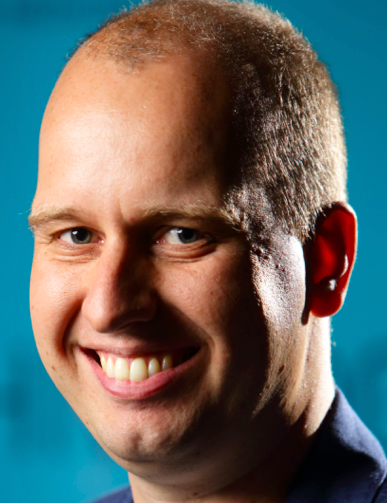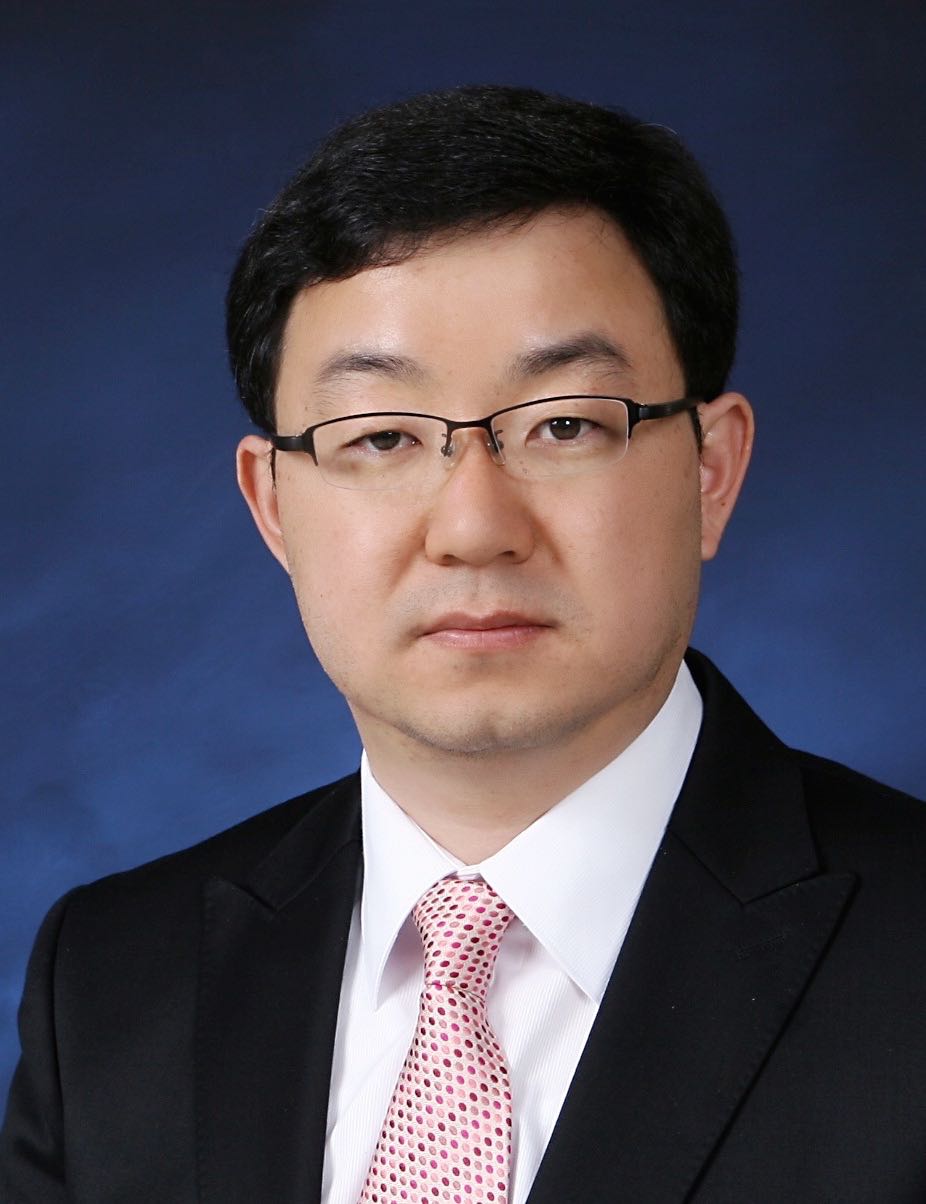Co-Located Conference AgendasLab-on-a-Chip and Microfluidics Europe 2018 | Organ-on-a-Chip, Tissue-on-a-Chip Europe 2018 | Point-of-Care Diagnostics & Biosensors Europe 2018 | 

Tuesday, 5 June 201807:30 | Conference Registration, Materials Pick-Up, Morning Coffee and Tea | |
Session Title: Conference Opening Plenary Session |
| | |
Plenary Session Chairman: Richard Spero, Ph.D., Co-Founder and CEO, Redbud Labs: Advanced Microfluidic Technologies |
| | 08:15 |  | Conference Chair Conference Chairman Welcome and Opening Remarks
Richard Chasen Spero, CEO, Redbud Labs, United States of America
|
| 08:30 |  | Keynote Presentation Nanoplasmonic Biosensors: From Innovative Materials to Multimode Sensing with Integrated Microdevices
Amy Shen, Professor and Provost, Okinawa Institute of Science and Technology Graduate University, Japan
Gold nanostructures are a highly attractive class of materials with
unique electrochemical and optical sensing properties. Recent
developments have greatly improved the sensitivity of optical sensors
based on metal nanostructured arrays. We introduce the localized surface
plasmon resonance (LSPR) sensors and describe how its exquisite
sensitivity to size, shape and environment can be harnessed to detect
molecular binding events. We then describe recent progress in three
areas representing the most significant challenges: integration of LSPR
with complementary electrochemical techniques, long term live-cell
biosensing and practical development of sensors and instrumentation for
routine use and high-throughput detection. As an example we will
demonstrate a novel refractive index and charge sensitive device
integrated with nanoplasmonic islands to develop
nano-metal-insulator-semiconductor (nMIS) junctions. The developed
sensor facilitates simultaneous detection of charge and mass changes on
the nanoislands due to biomolecule binding. A brief insight on
microcontact printing to functionalize proteins on nanoplasmonic sensors
will also be discussed. The developed nanosensors can readily be
adopted for multiplexed and high throughput label-free immunoassay
systems, further driving innovations in biomedical and healthcare
research. |
| 09:00 |  | Keynote Presentation Towards Wearable Real-Time Clinical Monitoring Using Microfluidic Devices
Martyn Boutelle, Professor of Biomedical Sensors Engineering, Imperial College London, United Kingdom
Modern acute critical care medicine is increasingly seeking to protect
vulnerable tissue from damage by monitoring the patterns of physical,
electrical and chemical changes taking place in tissue – so called
multimodal monitoring. Such patterns of molecular changes offer the
exciting possibility of allowing clinicians to detect changes in patient
condition and to guide therapy on an individualized basis in real time.
Microfluidic lab-on-chip devices coupled to tissue sampling using
microdialysis provide an important new way for measuring real-time
chemical changes as the low volume flow rates of microdialysis probes
are ideally matched to the length scales of microfluidic devices. In
this presentation, I will describe the combination of miniature
electrochemical sensors and biosensors with 3D printed microfluidic
devices for transplant organ and patient monitoring. Concentrations of
key biomarker molecules can then be determined continuously using either
optically or electrochemically, using amperometric, potentiometic and
array sensors. Wireless devices allow analysis to take place close to
the patient. Droplet-based microfluidics, by digitizing the dialysis
stream into discrete low volume samples, both minimizes dispersion
allowing very rapid concentration changes to be measured, and allows
rapid transport of samples between patient and analysis chip. This talk
will overview successful design, optimization, automatic-calibration and
use of both continuous flow and droplet-based microfluidic analysis
systems for real-time clinical monitoring, using clinical examples from
our recent work. |
| 09:30 |  | Keynote Presentation Silicon Nanotechnology Meets Biology (Smaller and Wetter is Better)
Gregory Timp, Keough-Hesburgh Professor of Electrical Engineering & Systems Biology, The University of Notre Dame, United States of America
According to Moore’s law, the scaling of silicon integrated circuits is
supposed to reach the 5 nm-node sometime after 2020, although the
schedule is still problematic due to the astronomical cost and
atomically precise line-rules. On the other hand, biology has been
performing cost-effectively using proteins the size of 5 nm (and
smaller) that fold with atomic precision for 4.28 billion years now—it
is a robust and proven technology, albeit wet. In this talk, it is
argued that there is still “plenty of room at the bottom” for improving
performance if silicon nanotechnology is adapted to biology. With
silicon nanotechnology it is now within our grasp to create an interface
to biology on a nanometer-scale. Three examples of such interfaces are
proffered. The first is a liquid flow cell that works like an envelope
made from 30 nm-thick silicon nitride membranes, which can hold and
sustain living cells in medium and yet fits inside a Scanning
Transmission Electron Microscope (STEM). In a STEM, the liquid cell can
be used to visualize and track live cell physiology like a phage
infecting a bacterium with nucleic acids at 5 nm resolution. The second
is a nanometer-diameter pore sputtered through a silicon nitride
membrane 10-nm-thick that can be used to transfect cells precisely with
nucleic acids to affect gene expression in them and, under different
bias conditions, detect protein secretions from single cells with single
molecule sensitivity. The secretions inform on the cell phenotype and
offer a molecular diagnosis of disease. Finally, the third interface is a
sub-nanometer-diameter pore, which is about the size of an amino acid
residue, in either silicon dioxide or silicon nitride membranes ranging
from 6 to 10 nm-thick. Sub-nanopores like this have been used to read
the primary structure of a protein, i.e. the amino acid sequence, with
low fidelity, but with single molecule sensitivity, vastly outstripping
the sensitivity of conventional methods for sequencing such as mass
spectrometry. Taken altogether, the prospects are dazzling for a new
type of integrated circuit that incorporates biology with
state-of-the-art silicon electronics. |
| 10:00 | Morning Coffee Break and Networking in the Exhibit Hall | 10:45 |  | Keynote Presentation Extracellular Vesicles (EVs) and Cell Free DNA (cfDNA) as Blood-based Biomarkers: Plastic-based Microfluidics for their Enrichment and Analysis
Steve Soper, Foundation Distinguished Professor, Director, Center of BioModular Multi-Scale System for Precision Medicine, The University of Kansas, United States of America
While there are a plethora of different blood-based markers, EVs are
generating significant interests due to their relatively high abundance
(~1013 particles per mL of blood) and the information they
carry. EVs contain a diverse array of nucleic acids, such as mRNA,
lncRNA, and miRNA that can be used for disease management. In addition
to EVs, cfDNA also are biomarkers that can be used to help manage
different disease states using the mutations they possess that can have
high diagnostic value. In spite of the relatively high abundance of
cfDNA in diseased patients (~160 ng/mL), the extraction and enrichment
of cfDNA has been inefficient, even by commercial kits, due to the low
abundance of the tumor bearing DNA fragments (<0.01%) and the short
nature of these fragments, especially cancer-related cfDNA (as small as
50 bp). In this presentation, we will discuss the design, fabrication
and analytical figures-of-merit of a microfluidic device that can serve
the dual purpose for the affinity-based selection of EVs and the solid
phase extraction of cfDNA directly from plasma using the same device.
The microfluidic is made from a plastic that can be injection molded to
produce high quality devices at low cost. For EVs, the device is made
cyclic olefin copolymer (COC) is UV/O3 activated to allow for the
efficient immobilization of affinity agents to the surface of the
device. In the case of cfDNA, the device is made from COC as well, but
is only UV/O3 activated (i.e., no affinity agents used). Information
will be provided as to the ability to molecularly profile the cargo
contained within the affinity-selected EVs, in particular mRNA
expression profiling. We will also discuss the use of this microfluidic
to isolate with high recovery cfDNA from plasma samples with size
selection capabilities. The isolated cfDNA could be queried for
mutations using an allele-specific ligation detection reaction at a
mutant to wild-type ratio <0.1%. |
| 11:15 |  | Keynote Presentation Microphysiological Models Relying on Emergence of Multi-Cellular Engineered Living Systems
Roger Kamm, Cecil and Ida Green Distinguished Professor of Biological and Mechanical Engineering, Massachusetts Institute of Technology (MIT), United States of America
Recent work from many labs has demonstrated the unique capability of cells placed in 3D culture to self-organize into functional units and organ-like systems. In some cases, pluripotent cells can be induced to differentiate down independent pathways, leading to an organoid. In others, interacting units can be generated, often from iPS cells, and ‘engineered’ to interact in a way that recapitulates certain aspects of in vivo function or disease. Such models have tremendous potential both to gain new insight into disease processes and for moderate throughput drug screening. In this talk I will describe several models developed in our lab including a neuromuscular junction, blood-brain barrier, and vascularized skeletal muscle, addressing some of the design principles they have in common, the future potential, and barriers to progress. |
| 11:45 |  | Keynote Presentation Microscale Flow Patterning
Moran Bercovici, Associate Professor, Faculty of Mechanical Engineering; Head, Technion Microfluidic Technologies Laboratory, Technion, Israel Institute of Technology, Israel
The ability to manipulate fluids at the microscale is a key element of
any lab-on-a-chip platform, enabling core functionalities such as liquid
mixing, splitting and transport of molecules and particles.
Lab-on-a-chip devices are commonly divided in two main families:
continuous phase devices, and discrete phase (droplets) devices. While a
large number of mechanisms are available for precise control of
droplets on a large scale, microscale control of continuous phases
remains a substantial challenge. In a traditional continuous-flow
microfluidic device, fluids are pumped actively (e.g. by pressure
gradients, electro-osmotic flow) or passively (e.g. capillary driven)
through a fixed microfluidic network, making the device geometry and
functionality intimately dependent on one another (e.g. DLD, inertial
mixer, H-separator, etc.). The advent of on-chip microfluidic valves
brought more flexibility in routing fluids through microfluidic
networks, adding a dynamic dimension to the static geometrical network.
However, the number of degrees of freedom of valve-based systems is
restricted by their dependence on bulky pneumatic lines (regulators,
pressure systems, controllers), which are difficult to scale down in
size and cost. In this talk I will present our ongoing work leveraging
non-uniform EOF and thermocapillary flows to control flow patterns in
microfluidic chambers. By setting the spatial distribution of surface
potential or a spatial temperature distribution, we demonstrate the
ability to dictate desired flow patterns without the use of physical
walls. We believe that such flow control concepts will help break the
existing link between geometry and functionality, bringing new
capabilities to on-chip analytical methods. |
| 12:15 | Networking Lunch in the Exhibit Hall -- Meet the Exhibitors and View Posters | |
Session Title: Technology Development in the Organ-on-a-Chip Field, circa 2018 |
| | 13:30 |  | Keynote Presentation Functional Coupling of Human Pancreatic Islet Microtissues and Liver Spheroids in a Novel Micro-physiological Multi-organ System For Studies of Human Metabolic Diseases in Drug Discovery
Tommy Andersson, Drug Metabolism and Pharmacokinetics, Cardiovascular and Metabolic Diseases, AstraZeneca, Gothenburg, Sweden
Multi organ-on-a-chip technologies, emulating human physiology and mimicking human disease states, could aid preclinical efforts by providing relevant translational models to validate targets and test tool compounds early in drug discovery. Such models have the potential to improve translation to patients, decrease time spent in early clinical programs and reduce the need for animal models. Rodent studies have shown that insulin resistance causes hepatocytes to produce secreted factors that influence the islets. Whether similar cross talk exist in man remains to be determined. We therefore decided to develop a human liver - pancreatic islets chip model. Pancreatic islets and liver spheroids were applied in a two-organ microfluidic chip supplied by TissUse™ that allows cross talk between both organs. We have demonstrated that the model responds in a physiological way to a glucose load by increasing insulin secretion, which stimulates glucose consumption by the liver spheroids. Both islet and liver spheroids show stable functionality as indicated by insulin secretion, albumin production and glucose consumption over the experimental period of two weeks. Initial results indicate that the liver spheroids can be made insulin resistant, and thus represent a relevant metabolic disease model. |
| 14:00 | Towards High Content & High Throughput Screening Platforms: Enabling Technologies to Advance Organ-on-a-Chip Systems
Peter Loskill, Assistant Professor for Experimental Regenerative Medicine; Attract Group Leader Organ-on-a-Chip, Fraunhofer Institute for Interfacial Engineering and Biotechnology IGB, Eberhard Karls University Tübingen, Germany
Drug discovery and development to date has relied on animal models, which are useful, but fail to resemble human physiology. The discovery of human induced pluripotent stem (iPS) cells has led to the emergence of a new paradigm of drug screening using human patient- and disease-specific organ/tissue-models. One promising approach to generate these models is by combining the iPS technology with microfluidic devices tailored to create microphysiological environments and recapitulate 3D tissue structure and function. Such microphysiological organ-on-a-chip systems (OoCs) combine human genetic background, in vivo-like tissue structure, physiological functionality, and “vasculature-like” perfusion. Using microfabrication techniques, we have developed multiple OoCs that incorporate complex human 3D tissues and keep them viable and functional over multiple weeks, including a “Retina-on-a-chip”, a “Heart-on-a-chip” and a “White adipose tissue (WAT)-on-a-chip”. The OoCs generally consist of three functional components: organ-specific tissue chambers mimicking in vivo structure and microenvironment of the respective tissues; “vasculature-like” media channels enabling a precise and computationally predictable delivery of soluble compounds (nutrients, drugs, hormones); “endothelial-like” barriers protecting the tissues from shear forces while allowing diffusive transport. The small scale and accessibility for in situ analysis makes our OoCs amenable for both massive parallelization and integration into a high-content-screening approach. The adoption of OoCs in industrial and non-specialized laboratories requires enabling technology that is user-friendly and compatible with automated workflows. We have developed technologies for automated 3D tissue generation as well as flexible plug&play connection of individual OoCs into multi-organ-chips. These technologies paired with the versatility of our OoCs pave the way for applications in drug development, personalized medicine, toxicity screening, and mechanistic research. | 14:30 |  Combining Organ Equivalents Using the Multi-Organ-Chip Technology Combining Organ Equivalents Using the Multi-Organ-Chip Technology
Ilka Maschmeyer, Senior Scientist, TissUse GmbH
The understanding of the bioavailability and metabolism of a chemical, either locally or systemically, is a key aspect in safety assessment. However, present in vitro and animal tests for drug development do not reliable predict the human outcome of tested drugs or substances because they are failing to emulate the organ complexity of the human body, leading to high attrition rates in clinical studies. For example, absorption, distribution, metabolism and excretion (ADME) are key determinants of efficacy and safety for therapeutic candidates. However, these systemic responses of applied substances are ignored in most in vitro tests. Here we present a universal microfluidic chip platform the size of a microscopic slide, consisting of an on-chip micro-pump and capable to interconnect different organ equivalents.
| 15:00 | Afternoon Coffee Break and Networking in the Exhibit Hall | 15:30 |  | Keynote Presentation Human Organs-on-Chips
Andries D. van der Meer, Associate Professor, Scientific lead, Organ-on-Chip Center Twente, University of Twente, Netherlands
Organs-on-chips are plastic microdevices the size of a USB-stick with microchannels and small chambers that are filled with liquid. The devices contain multiple human cell types which are cultured in a technologically controlled microenvironment that artificially mimics aspects of the human body like morphology, movement, flow, electrical stimuli and liquid gradients. The resulting device emulates human organ functions and can be used to study biomedical phenomena in the lab. By using patient-specific cells, blood samples, biometrics and imaging data to develop ‘personalized organs-on-chips’, we can study health and disease in models that are relevant for specific patients. The power of such a ‘personalized’ approach is demonstrated in our application of organs-on-chips in studies of thrombosis and vascular biology. |
| 16:00 |  | Keynote Presentation Human Vascular Microphysiological System Models for Drug Testing and Disease Modeling
George Truskey, R. Eugene and Susie E. Goodson Professor of Biomedical Engineering, Duke University, United States of America
We developed an endothelialized tissue engineered blood vessel (eTEBV) microphysiological system by rapid generation of small-diameter vessels (400-800 µm) by plastic compression. TEBVs were mechanically strong enough to allow endothelialization and perfusion at physiological shear stresses immediately after fabrication. eTEBVs perfused at physiological shear stresses for 1- 5 weeks expressed von Willebrand factor (vWF) and demonstrated EC-specific release of NO, indicating a confluent layer of ECs. After 1-5 weeks of perfusion, eTEBVs exhibited dose-dependent contraction and relaxation following exposure to phenylephrine and acetylcholine (ACh), respectively. In contrast, TEBVs without ECs or eTEBVs pre-treated with the NO synthase inhibitor L-NG-Nitroarginine methyl ester underwent vasoconstriction in response to ACh consistent with vasodilation by EC release of NO. TEBVs elicited reversible activation following acute stimulation by TNFa which transiently inhibited ACh-induced relaxation, and was eliminated by pre-exposure of eTEBVs to therapeutic doses of statins. TNFa treatment also promoted monocyte adhesion and transmigration. Using smooth muscle cells and endothelial cells derived from iPSCs, we produced a functional eTEBV model of Hutchison-Gilford Progeria Syndrome (HGPS), a rare, accelerated aging disorder caused by an altered form of the lamin A (LMNA) gene termed progerin. eTEBVs fabricated with smooth muscle cells from individuals with HGPS show reduced vasoactivity, increased medial wall thickness, increased calcification and apoptosis in comparison to eTEBVs fabricated with smooth muscle cells from normal individuals or primary MSCs. In addition, treatment with the rapamycin analog, RAD001, increased HGPS TEBV vasoactivity and reduces some disease symptoms. These results indicate that we can use human eTEBVs to model diseases in vitro.
|
| 16:30 |  | Keynote Presentation Lung-on-Chip Models of the Healthy and Diseased Lung Parenchyma
Olivier Guenat, Head, Organs-on-Chip Technologies, ARTORG Center for Biomedical Engineering Research, University of Bern-Switzerland, Switzerland
The complexity of the lung can be illustrated by its delicate tree-like architecture that ends with the alveolar sacs, where the gas exchanges take place. This whole environment is subjected to a cyclic, mechanical constraint induced by the respiratory movements. We recently reported about an advanced in-vitro model of the lung parenchyma that mimics the key aspects of the lung alveolar environment in an unprecedented way (Stucki et al., Lab Chip, 2015). The system reproduces the three-dimensional mechanical strain induced by the respiratory movements, the air-liquid interface and the ultra-thin barrier, using an elastic membrane made of a 3um thin PDMS porous (3um pores) layer on which cells can be cultured on both sides. We could demonstrate that the physiological mechanical stress significantly affects a number of barrier functions, such as the transport of molecules though the barrier. Furthermore, in view to make the system widely accessible, great care was taken to make it robust and simple to use. In contrast to the lung-on-chip reported by the Wyss Institute in Boston (Huh et al. Science 2010), our device mimics the three-dimensional movements induced by the respiration (instead of a unidirectional stress in the Wyss lung-on-chip). We also demonstrated that the three-dimensional breathing motions of the alveolar barrier can be monitored in real time with a micro-impedance tomography system (Mermoud et al., Sensors and Actuators B: 2018). The development of the lung-on-chip was awarded with a number of prizes, including the Venturekick awards, a nomination at the Swiss Medtech Award in 2017 and is currently under development at AlveoliX, a start-up aimed at bringing organs-on-chip on the market. Recently, we reported about another part of the lung alveolar barrier, the lung microvasculature. Lung endothelial cells and lung pericytes seeded in a micro-engineered environment filled with fibrin gel, self-assemble to build a network of perfusable and contractile microvessels of only a few tens of micrometers in diameter (Bichsel et al., Tissue Eng. A, 2015). We could demonstrate for the first time in-vitro that microvessels contract upon exposure to a vasoconstrictor. This model, made of primary human cells of the lung is of great relevance for the investigation of pathomechanism of lung diseases. |
| 17:00 |  | Keynote Presentation Validating Microphysiological Systems
Danilo Tagle, Director, Office of Special Initiatives, National Center for Advancing Translational Sciences at the NIH (NCATS), United States of America
|
| 17:30 |  Challenges and Solutions for Industrial Manufacturing of Organ-on-a-Chip Devices Challenges and Solutions for Industrial Manufacturing of Organ-on-a-Chip Devices
Holger Becker, Chief Scientific Officer, Microfluidic ChipShop GmbH
While organ-on-a-chip is an academically thriving field in recent years, the successful commercialization of such devices will depend on the ability for industrial manufacturing. The presentation will highlight a variety of organ-on-a-chip devices which have been developed with methods paving the way towards commercial use and the associated challenges for volume manufacturing.
| 18:00 | Networking Reception in the Exhibit Hall with Beer and Wine. Engage with the Exhibitors, View Posters in a Relaxed Setting at the De Doelen Rotterdam | 19:00 | Close of Day 1 of the Conference |
Wednesday, 6 June 201807:00 | Morning Coffee and Tea in the Exhibit Hall | |
Session Title: The Utilization of Organs-on-Chips in Drug Discovery and Applications Development |
| | 07:30 | On Chip Approach to Onco-Immunology and Immune System Response
Luca Businaro, Scientist, Italian National Research Council, Italy
Reconstitution of the immune system through organ-on-chip (OOC) approach opens a new window to live observation of the immune response to insults with or without drug treatments, making OOC a cornerstone for dissecting complex biological phenomena and pre-clinical testing of drugs. | 08:00 | Implementation of a Cellular Co-Culture Interface Within a Placenta-on-Chip Device
Jamal Daoud, Research Associate, National Research Council of Canada, Canada
A placenta-on-chip device is introduced that integrates a materno-fetal co-culture interface with bio-analytics for the purpose of elucidating cell-cell interactions. | 08:30 | Advanced in vitro Cellular Systems as Platforms for Drug Development
Nikolce Gjorevski, Scientist, Mechanistic Safety, Pharmaceutical Sciences, Roche Innovation Center Basel, Switzerland
Epithelial organoids are miniature versions of real organs formed by stem cell self-organization. In combination with Organs-on-a-chip approaches, organoids are promising models of organ development, function and disease, with potential applications in basic research, drug discovery and cell-based therapies. However, their research impact is currently held back by a number of limitations, including dependence on ill-defined matrices, heterogeneity and irreproducibility, and closed, inside-out epithelial structure. We will discuss these caveats, and propose strategies to overcome them, thereby expanding the applicability of organoids as superior in vitro models of organ physiology and disease. | 09:00 | Advancing Pre-Clinical Safety Assessment with Organs-on-Chips
Rhiannon David, Senior Scientist, AstraZeneca, United Kingdom
Organs-on-chips (microphysiological systems (MPS)) aim to recapitulate the architecture, cell-cell interactions, and microenvironment of different tissues, which is more representative of their complex in vivo biology. Human-sourced MPS provide an opportunity to generate safety and efficacy data for drug development with improved clinical relevance over more traditional animal models. This presentation will outline the context of use of MPS at AstraZeneca and give examples of data generated from these systems, with a focus on the development of a bone marrow-on-a-chip to better predict clinically-observed toxicity. | 09:30 |  | Keynote Presentation Concurrent Toxicity and Efficacy Evaluations in Multi-Organ Functional Human-on-a-Chip Systems
James Hickman, Professor, Nanoscience Technology, Chemistry, Biomolecular Science and Electrical Engineering, University of Central Florida; Chief Scientist, Hesperos, United States of America
The current drug development process is inefficient, taking years from target compound identification to marketable drug, and costs up to 2 billion dollars during the process. The considerable attrition-rate of drug candidates at all stages of development to a significant extent arises from the poor predictive nature of preclinical models for efficacy and toxicity, especially the inability to translate efficacy between preclinical and clinical situations. Systems capable of directly measuring organ function, biomarker release, and most importantly the synergistic interactions between organs, especially the generation of liver metabolites would be ideal. Body-on-a-chip systems utilize function based cell models that accurately capture and predict multi organ complexity in response to administered compound within correctly scaled and physiologically relevant platforms. This data can then theoretically be used to produce relevant modeling information related to drug responses in clinical settings, and thereby provide accurate predictions of a compound’s patient specific toxicology and efficacy. We have demonstrated functional human models to evaluate multi-organ toxicity in 2-, 3- and 4-organ systems under continuous flow conditions in a serum-free defined medium utilizing a pumpless platform for 28 days with cardiac, muscle, cancer, neuronal and liver modules. The pharmacological relevance of these integrated modules was evaluated with drugs and compared to human and animal data and these results will be presented. There currently is also a focus at the NIH, FDA and EMA to understand how one could validate these systems such that qualification could be granted for their use to augment and possibly replace animal studies. This talk will also give results of six workshops held at NIH as a collaboration between the American Institute for Medical and Biological Engineering (AIMBE) and NIH to explore what is needed for validation and qualification of these new systems. |
| 10:00 | Morning Coffee Break and Networking in the Exhibit Hall | 10:30 | Microfabrication Technologies For Organ-on-Chip Applications
Marcel Karperien, Professor, University of Twente, Netherlands
| 11:00 | Peripheral Nerve-on-a-Chip: Quantifying Myelination and Demyelination
Michael Moore, Professor of Biomedical Engineering, Tulane University and Co-Founder, AxoSim, United States of America
Development of microphysiological models of the peripheral nervous system have lagged that of other organ systems. This is perhaps partially because peripheral nerve disorders are rarely life-threatening, though they are frequently severely debilitating. The most effective organ-on-a-chip models are those that reflect relevant anatomical and physiological features, enabling comparisons with animal studies or clinical outcomes. In our model of rat myelinated peripheral nerve, we show that we can quantify key measurements using histology and nerve conduction, exactly the main quantitative endpoints used in preclinical or clinical studies to assess peripheral nerve degeneration. In particular, we show that nerve conduction velocity correlates with myelin formation, as measured by % myelinated axons and g-ratio. In like manner, induced demyelination leads to structural degeneration and functional deficits that may also be quantified using histology and nerve conduction. This model is unique in its ability to capture these specific metrics of peripheral nerve health. Ongoing challenges and implications for modeling demyelinating disorders will also be discussed. | 11:30 | Recreating Neurovascular Function Using Organ-on-Chips
Anna Herland, Assistant Professor, Department of Physiology and Pharmacology, Karolinska Institute, Sweden
The neurovascular unit (NVU) is a restrictive barrier essential for function and health of the central nervous system (CNS). The NVU lines the 400 miles of capillaries that course through the brain and spinal cord and is formed by a complex network of endothelial cells, astrocytes, pericytes, neurons and a basal lamina. Despite being of major importance for evaluating brain targeting of drugs and disease-induced alternations the established in vitro models of the NVU are disappointingly non-predictive. Animal in vivo models typically also fail to severe as models of the human NVU and CNS due to species-specific differences. We used micro-engineering to create vascular-mimicking, fluidic Organ-on-Chip models of NVU. These models were populated with human primary or stem cell derived vascular and neural cells. The design of the NVU-on-Chip was tailored after the on the biological study in focus. A 3D microfluidic NVU model was created to allow direct interaction between the human endothelium and perivascular cells such as astrocytes or pericytes. This configuration resulted in higher barrier function and a more in vivo like response to an acute inflammation compared to a traditional culture. For evaluation of drug efflux properties and penetration of biopharmaceuticals, we developed a compartmentalized NVU-on-Chip system. This system also facilitated studies of drug-induced blood-brain-barrier alternations. | 12:00 | Neuropsychiatric Disease Modeling Using Human Pluripotent Stem Cells
Steven Kushner, Professor and Chair of Neurobiological Psychiatry, Erasmus University Medical Center, Netherlands
There is yet no satisfying evidence-based biological mechanism for any psychiatric disorder, likely due to the extraordinary complexity of the brain and the difficulties inherent in studying human neurophysiology. Towards the goal of establishing standardized methods for investigating the pathophysiology of human brain disorders, we have developed novel state-of-the-art methods for differentiating physiologically active three-dimensional (3D) neuronal networks from human patient-derived induced pluripotent stem cells, offering the unique opportunity to investigate the molecular and cellular pathophysiology of disease initiation and progression. In my lecture, I will discuss the implementation of this methodology and the electrophysiological properties of the resulting neuronal networks. Moreover, I will describe the successful application of this approach for revealing fundamental insights into the neurobiology of schizophrenia using a family-based design supported by next-generation sequencing. | 12:30 | Networking Lunch -- Meet the Exhibitors and View Posters | 13:15 | Development of a Diet-Induced Disease-Mimicking in vitro Model of Non-Alcoholic Steatohepatitis (NASH)/ Fibrosis
Roeland Hanemaaijer, senior scientist, TNO, Netherlands
Development of a predictive diet-induced 3D NASH/fibrosis co-culture model based on iPSC derived hepatocytes and human stellate cells mimicking patient variability. | 13:30 |  | Keynote Presentation Engineering Multicompartment Organ-Chip Systems
Elisabeth Verpoorte, Chair of Analytical Chemistry and Pharmaceutical Analysis, University of Groningen, Netherlands
The miniaturized total chemical analysis system has been successfully repurposed over the past twenty years or so for engineering cellular microenvironments which more faithfully mimic in vivo conditions for cell- and tissue-based studies. Organs-on-a-chip are a recent outgrowth of this effort, comprising systems that extend beyond microfluidic perfusion culture to allow the establishment of microphysiological systems comprising interconnected multiorgan systems. This presentation will consider a couple of examples of such systems out of our labs in Groningen for the elucidation of organ (inter)actions in the gastrointestinal tract and the liver. |
| 14:00 |  | Keynote Presentation Organs-on-Chips: Microengineered Systems for Safety Assessment & Disease Modeling
Geraldine A Hamilton, President/Chief Scientific Officer, Emulate Inc, United States of America
Microengineered Organs-Chips show physiological functions consistent with normal living human or animal cells in vivo. Each Organ-Chip is composed of a clear flexible polymer about the size of a AA battery that contains hollow channels lined by living human cells. The cells are cultured under continuous flow and mechanical forces thereby recreating key factors known to influence cell function in vivo. Cells cultured under continuously perfused, engineered 3D microenvironments go beyond conventional 3D in vitro models by recapitulating in vivo intercellular interactions, spatiotemporal gradients, vascular perfusion, and mechanical microenvironments. Integrating cells within Organs-on-Chips, enables the study of normal physiology and pathophysiology in an organ-specific context. We have developed different Organ-Chips, such as, Liver-Chip, Lung-Chip, and Intestine-Chip. We have further demonstrated new advancements in functionality of these systems and their potential across multiple applications relevant to drug discovery and development including: understanding disease mechanisms, efficacy testing, safety assessment, and in de-risking mechanistic concerns using various organ systems. In this presentation, we highlight data to demonstrate the utility of the system for understanding disease mechanisms and predicting safety of drugs. |
| 14:30 |  | Keynote Presentation Microfluidics within a Well: Injection-Molded Plastic Array for 3D Culture
Noo Li Jeon, Professor, Seoul National University, Korea South
Polydimethylsiloxane (PDMS) has been widely used in fabricating microfluidic devices for prototyping and proof-of-concept experiments. Due to several material limitations, PDMS has not been widely adopted for commercial applications that require large-scale production. This presentation will describe a mass-producible Injection-Molded Plastic Array for 3D Culture Tissue (IMPACT) platform that incorporates a novel microfluidic design to integrate patterned 3D cell culture within a single 96-well. Multiple hydrogel patterns can be sequentially assembled by utilizing capillary-guided flow along wedges and narrow gaps designed within the well. The patterning is quick and robust. It is as simple as placing a liquid droplet on any part of the wedge structure to obtain spontaneous patterning within 1 second. Optimal dimensionless parameters required for successful capillary loading have been determined. The IMPACT platform was used to co-culture HUVEC and LF, and to obtain angiogenic sprouts with lumens and tip cells that are comparable to those observed in PDMS based devices. This platform is expected to have a wide range of applications related to biological discovery, tissue engineering and drug screening, and can be used in a variety of scales from lab bench to automated equipment. |
| 15:00 |  | Keynote Presentation Cell Fiber Technology For 3D Organ-on-a-Chip Application
Shoji Takeuchi, Professor, Center For International Research on Integrative Biomedical Systems (CIBiS), Institute of Industrial Science, The University of Tokyo, Japan
|
| 15:30 | Quantitative Assessment of Tissue Chip Technologies
Murat Cirit, Director at Translational Center of Tissue Chip Technologies, Massachusetts Institute of Technology (MIT), United States of America
A large percentage of drug candidates fail at the clinical trial stage due to a lack of efficacy and unacceptable toxicity, primarily because the in vitro cell culture models and in vivo animal models commonly used in preclinical studies provide limited information about how a drug will affect human physiology. The need for more physiologically relevant in vitro systems for preclinical efficacy and toxicity testing has led to a major effort to develop “Microphysiological Systems (MPS)”, aka tissue chips (TC), based on engineered human tissue constructs. Translational Center of Tissue Translational Center of Tissue Chip Technologies (TC2T) has been established to bridge between academic research and development and industrial application of MPS technologies via providing unbiased testing and validation of MPS technologies. TC2T takes a holistic and mechanistic approach—based on quantitative systems pharmacology (QSP)— to achieve unbiased characterization of these complex systems and translation of experimental insights to clinical outcomes. Our team at MIT includes tissue engineers, experimentalists, and computational biologists and serves as the core of the testing center to identify adverse effects of pharmaceutical compounds and environmental toxin on human organs.
| 16:00 | A Mesh Culture Technique for Fabricating Organ-on-chip and Organoids
Kennedy Okeyo, Senior Lecturer, Institute for Frontier Life and Medical Sciences, Kyoto University, Japan
With increasing focus on organ-on-a-chip and organoids, the ability to fabricate standalone tissues in a microfluidic platform is increasingly becoming important. This talk will introduce a mesh culture technique, dubbed “The Shoji Technique”, which enables fabrication of standalone tissues compatible with a microfluidic platform. Application toward the realization of organ-on-a-chip capable of recapitulating direct crosstalk between different constituting cell layers of an organ (e.g. epithelial and endothelial layers) will be demonstrated. | 16:30 | Bone Marrow-on-a-Chip: Long-Term Culture of Human Hematopoietic Stem Cells in a 3D-Microfluidic Environment
Mark Rosowski, Assistant Professor and Head of Tissue Engineering & Molecular Biology, Technische Universität Berlin, Germany
Multipotent hematopoietic stem cells (HSCs) give rise to all blood cell types. The bone marrow stem cell niche in which the HSCs are maintained is known to be vital for their sustainment. Unfortunately, to this date, no in vitro model exists that truthfully mimics the aspects of the bone marrow niche and simultaneously allows the long-term culture of HSCs. In this study, we present a novel 3D co-culture model, based on a hydroxyapatite-coated zirconium oxide scaffold mimicking the trabecular bone. Primary human mesenchymal stromal cells (MSCs) were employed to build up a suitable environment within the scaffold for the culture of HSCs. Subsequently, primary human HSCs were seeded in this bone marrow mimicking environment. The whole culture was carried out within a microfluidic multi-organ-chip platform (2OC). Immunofluorescent staining, qPCR, and scanning electron microscopy data demonstrated that the MSCs had produced an appropriate environment for HSC cultivation. Using flow cytometry and CFU-GEMM assays, it could be shown that HSCs remained their native phenotype for at least eight weeks. Moreover, cells cultured for four weeks in the bone marrow model passed the gold standard test for native multipotent HSCs by successfully engrafting in irradiated immunocompromised mice. Here we present for the first time a novel human in vitro bone marrow model, capable of the successfully long-term culture of functional multipotent HSCs in a microfluidic environment. | 17:00 | Tailoring the Extracellular Environment of in vitro Systems
Sandro Meucci, R&D Scientist, Micronit Microtechnologies, Netherlands
Our most recent results in integrating sensing elements, high stiffness materials and surface adhesive patterns into the commercial organ on a chip device produced by Micronit will be presented. | 17:30 | Systematic Investigation of the Effect of Shear Stress in a Microfluidic Intestine-on-a-Chip Model to study oral delivery of vaccines
Ludivine Delon, Researcher, Future Industries Institute, University of South Australia, Australia
After investigating the effect of shear stress on the functional and structural differentiation of an intestine-on-a-chip, microfluidic devices were developed to study the uptake and transport mechanisms (degradation of particles, biologic payload translocation, mucus interaction) of particulate carriers. | 17:45 | Real-Time Oxygen Monitoring Inside a Liver-on-a-Chip Using Inkjet-Printed Sensors
Ana Moya, Researcher, Institute of Microelectronics of Barcelona, Biomedical Research Networking Center in Bioengineering, Biomaterials and Nanomedicine (CIBER-BBN), Spain
We present a novel approach to integrate electrochemical dissolved oxygen sensors on the porous and ultraflexible cell culture membrane of a Liver-On-a-Chip system, using the non-contact inkjet printing technology, for real-time monitoring of oxygen consumption of primary hepatocytes cell culture. | 18:00 | Comparison of Serial and Parallelized Microfluidic Structures Mimicking Hepatic Cords and Liver Sinusoids on a Chip
Manon Boul, PhD Student, ENS Paris Saclay, France
Two distinct microfluidic architectures reproducing a multiplicity of hepatic cords displayed on a single chip are loaded with human hepatocytes and endothelial cells, and compared. | 18:15 | Development of Skin-on-Chip Containing Neopapillae and Proof-of-Concept Hazard Assessment Testing with Contact Sensitizer Cinnamaldehyde
Irit Vahav, PhD Student, VU University Medical Center, Amsterdam, Netherlands
Contact with the skin is inevitable for daily life products. The major penetration routes for these substances are via the hair shaft and stratum corneum. Therefore skin models which closely represent skin physiology and which incorporate the skin penetration routes are required for hazard assessment. Aim: to develop human skin-on-chip containing neopapillae and establish Proof-of-Concept testing with contact sensitizer cinnamaldehyde. Dermal papilla cells were isolated from human hair follicles, expanded and used to reconstruct neopapillae. Neopapilla were incorporated into a bilayered skin substitute (reconstructed epidermis on a fibroblast populated hydrogel). The air lifted construct was further cultured for at least 10 days in the TissUse bioreactor. Cinnamaldehyde was applied topically and viability and cytokine secretion assessed over 7 days. The skin-on-chip containing neopapillea was viable for 10 days under dynamic flow within the bioreactor. Topical administration of cinnamaldehyde to the stratum corneum resulted in dose dependent cytotoxicity (release of LDH) and cytokine IL-18 release into the microfluidic culture medium. Proof of concept testing of skin-on-chip containing neopapillae with cinnamaldehyde demonstrates the next generation of skin models under development for investigating local and systemic toxicity to chemicals. | 18:30 | Close of Day 2 of the Conference. |
|


 Add to Calendar ▼2018-06-05 00:00:002018-06-06 00:00:00Europe/LondonOrgan-on-a-Chip, Tissue-on-a-Chip Europe 2018Organ-on-a-Chip, Tissue-on-a-Chip Europe 2018 in Rotterdam, The NetherlandsRotterdam, The NetherlandsSELECTBIOenquiries@selectbiosciences.com
Add to Calendar ▼2018-06-05 00:00:002018-06-06 00:00:00Europe/LondonOrgan-on-a-Chip, Tissue-on-a-Chip Europe 2018Organ-on-a-Chip, Tissue-on-a-Chip Europe 2018 in Rotterdam, The NetherlandsRotterdam, The NetherlandsSELECTBIOenquiries@selectbiosciences.com